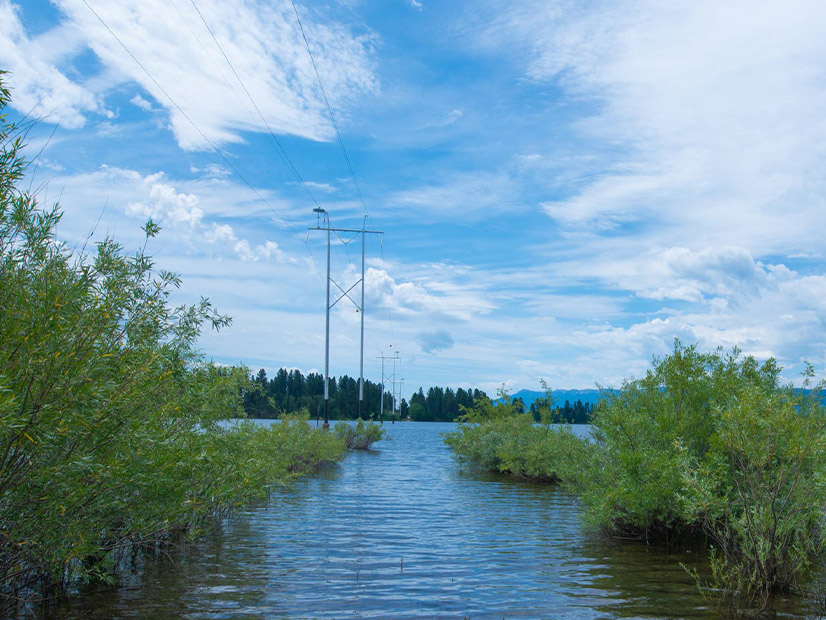
FERC on June 11 approved CAISO tariff revisions that will allow transmission owners to recover transmission revenue shortfalls attributed to transitioning their assets into the ISO’s Extended Day-Ahead Market (EDAM) (ER24-1746).
CAISO’s initial proposal for the “access charge” was the only provision in the EDAM tariff the commission rejected when it approved the market’s design and rules in December. (See CAISO Wins (Nearly) Sweeping FERC Approval for EDAM.)
In the December order, FERC found the ISO failed to justify the reasons behind the three components constituting the access charge, but Commissioner Allison Clements at the time emphasized that the rejection came “without prejudice” and encouraged the ISO to work with its stakeholders and file a revised proposal.
In the revised filing, CAISO explained that while participation in the EDAM will not alter a transmission owner’s (TO) transmission revenue requirement, it could cause the owner to lose out on transmission sales it could’ve made absent that participation, thereby reducing revenues.
“CAISO explains that stakeholders have raised concerns that these changes in transmission owners’ revenues due to transmission owner participation in EDAM may result in unexpected downstream cost shifts for ratepayers,” the commission said in the June 11 order.
The ISO said those cost shifts could be most pronounced upon launch of the EDAM and each time a new entity joins the market.
3 Components
Like the initial proposal for the access charge, the revised plan consists of three components.
Under the first component, TOs may include revenue shortfalls related to the transition from bilateral market transmission service to day-ahead market service. Those shortfalls could stem from EDAM transfers displacing revenues expected from sales of short-duration non-firm and firm point-to-point transmission service.
“CAISO explains that EDAM transmission owners will first calculate their recoverable transmission service revenue based on the annual average of revenues associated with qualifying eligible short-duration transmission products,” the order notes. “The transmission service revenue shortfalls recoverable under the EDAM access charge’s first component will consist of the difference between the actual short-term transmission service revenues recovered and the three-year pre-EDAM average short-term transmission service revenues.”
The second component of the EDAM access charge will permit TOs to recover a portion of the costs not reflected in the three-year “lookback” associated with the first component. This will include revenue shortfalls “from foregone sales of non-firm and short-term firm transmission service over certain new network upgrades and associated with the release of transmission capacity resulting from the expiration of EDAM legacy contracts,” the order noted.
Under this component, a TO’s access charge can include only lost revenues associated with new network upgrades that have been approved by FERC or a local regulatory authority and that function as available transmission in EDAM.
“CAISO explains that eligible new network upgrades are those that increase transfer capability between EDAM BAAs or between the CAISO BAA and an EDAM BAA, are in service and are energized after the EDAM Entity begins participation in the day-ahead market,” the commission wrote. The ISO also clarified that a TO cannot roll all its eligible new network upgrade costs or expiring legacy transmission contract costs into the EDAM access charge, but only an applicable percentage.
The third component of the access charge allows an EDAM TO to recover shortfalls “associated with wheeling through an EDAM BAA or the CAISO BAA in excess of the total net EDAM transfer of the BAA,” with costs based on the transmission used to wheel energy completely through a TO’s system.
“CAISO further states that in periods where this excess occurs, the EDAM Entity, on behalf of the EDAM transmission owner, will be compensated for the transmission use that supports the excess wheeling at the EDAM transmission owner’s non-firm hourly point-to-point transmission rate or the CAISO participating transmission owner will be compensated for excess wheeling through transmission use at the applicable wheeling access charge transmission rate,” the commission said.
‘Effective Indefinitely’
Under the rules, CAISO will calculate an access charge rate for each EDAM entity based on the entity’s gross load.
“CAISO proposes to calculate the rate using the aggregate projected annual transmission revenue shortfalls for each of the three EDAM access charge components of all other EDAM transmission owners, pro-rated to each EDAM BAA by its gross load ratio. As such, CAISO states no EDAM entity will be assessed its own projected recoverable revenue shortfalls,” the order said.
The order notes that while CAISO views the EDAM access charge as a temporary measure, it expects the mechanism to “be a necessity for the foreseeable future” and remain “effective indefinitely” as more participants integrate into the market over time.
Coming little more than a week after NV Energy confirmed its intent to join EDAM over SPP’s Markets+, FERC’s approval of the access charge marks another accomplishment for the CAISO market — and one that could draw additional commitments.
In a March 21 letter to CAISO COO Mark Rothleder signaling its intent to join EDAM, Idaho Power cited the need for a “transmission revenue recovery mechanism” as a key concern the ISO needed to address before the utility could formally commit to the market.
In addition to NV Energy and Idaho Power, the EDAM has won solid commitments from Balancing Authority of Northern California, Los Angeles Department of Water and Power, and Portland General Electric, while PacifiCorp in April became the first entity to fully commit to signing an implementation agreement with the market.



